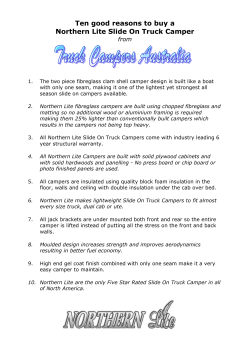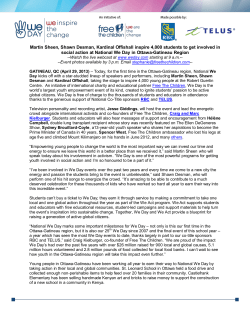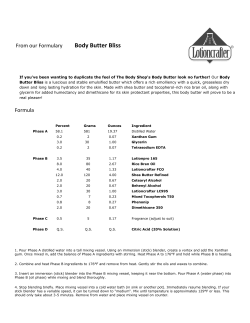
How to Coat Concrete Countertops
How to Coat Concrete Countertops with EnviroTex Lite, Crystal Sheen, EX-88 or EX-74 EnviroTex Lite, Crystal Sheen, EX-88 and EX-74 are extremely clear, tough, high gloss epoxy coatings formulated to produce a deep glass like appearance in a single layer on a sealed surface. Two or more layers are often applied for added depth and protection. For high heat and UV protection, you may want to consider EX-74, which has been formulated for improved UV resistance to reduce yellowing and surface degradation from UV exposure. EnviroTex Lite, EX-88 and EX-74 have extended "open times" which allows up to 5 minutes in the mixing container at 70º F and up to 25 minutes of working time. EnviroTex Lite, Crystal Sheen, EX-88 and EX-74 are waterproof, heat & alcohol resistant. Preparation: Cover all exposed cabinets, etc. with plastic drop sheets before starting your project. Tape in place as required with non-absorbent plastic or vinyl type tape. Note, many of the chemicals used during this process may damage the cabinets and their existing finish if not protected. New concrete counter tops: Newly poured concrete surfaces should cure for a minimum of 28 days prior to coating. This allows moisture to dissipate from within the concrete. Coating too soon will often result in a slightly cloudy or gray appearance between the coating and the concrete as well as pour adhesion; this is due to trapped moisture. Once the concrete has cured 28 days and is thoroughly dry, the surface will need to be abraded with a low speed polisher/grinder or belt sander with diamond grit. Note, concrete supply outlets and some rental companies offer various grinding and diamond polishing equipment. Once the surface has been evenly abraded, vacuum, then acid etch the entire the surface. Acid etching helps to remove containments, which may prevent good adhesion. Acid etching is done with a 50/50 solution of Muriatic Acid and water, applied with a sponge. After etching, rinse area with water. Make sure that all safety precautions are carefully understood and in place prior to this procedure. This includes protective eyewear, rubber gloves, protective clothing and shoes. Proper ventilation is required during this process. Important: Allow the concrete to dry thoroughly (24 to 48 hours) before proceeding to Sealing/Coating. Previously finished concrete counter tops: It will be necessary to remove the existing surface with an abrasive. For good adhesion, one must cut into the concrete surface with a low speed polisher/grinder or belt sander using diamond grit. Note, concrete supply outlets and some rental companies offer various grinding and diamond polishing equipment. As with most projects, proper prep and cleaning of the surface is the key to a successful job. If the concrete counter has been in service for some time, it is essential that great care be taken in removing all stains, grease, wax, etc. Multiple cleanings maybe necessary with strong grease removers, specifically around stovetops! Once the surface has been cleaned, degreased and abraded, vacuum, then acid etch the entire the surface. Acid etching helps to remove containments, which may prevent good adhesion. Acid etching is done with a 50/50 solution of Muriatic Acid and water, applied with a sponge. After etching, rinse area with water. Make sure that all safety precautions are carefully understood and in place prior to this procedure. This includes protective eyewear, rubber gloves, protective clothing and shoes. Proper ventilation is required during this process. Important: Allow the concrete to dry thoroughly (24 to 48 hours) before proceeding to Sealing/Coating. Sealing: Exposed concrete is not uniformly porous and therefore will absorb EnviroTex Lite, Crystal Sheen, EX-88 or EX74 at different rates. You may find some areas have completely absorbed the coating, while other areas have not. To avoid this uneven absorption issue, apply two or three thin seal coats. To seal the surface, measure and mix approximately 2 ounces per square foot, pour onto the surface and spread with a stiff piece of card stock or plastic spatula. Ideally, there should be just enough material to "wet" the surface without any build or thickness. Apply to the entire top area and sides as required. Remove all excess material. Allow this surface seal coat to cure 24 hours, then apply a second seal coat in the same manner and allow to cure. The second seal coat now cured, should have a slight uniform sheen with no dull or flat spots. If dull or flat spots appear, then repeat the process until the surface has a uniform sheen when cured. Application: Prior to working with EnviroTex Lite, Crystal Sheen, EX-88 or EX-74, ensure that the resin & hardener bottles are slightly warm to the touch (70º F). If not, place both bottles in warm, not hot water for 5-to-lO minutes. As a result, the resin and hardener will measure & mix easier and flow better with fewer bubbles. 1. Measure resin and hardener in exact amounts by volume. Do not guess at the proper ratio or just empty the two bottles into your mixing container. Unless you measure equal portions of resin and hardener, your ratio will very likely be inaccurate, resulting in a soft sticky coating! Determine the amount of fluid to be used by measuring the top and sides of your project. On average use 4 -to- 6 ounces per square foot. EnviroTex Lite, Crystal Sheen, EX-88 or EX-74 will not level correctly if spread too thin! 2. Mix measured resin and hardener in a clean, straight sided, fiat bottom container. Stir until thoroughly blended. Scraping sides and bottom continually while mixing is a must! Mixing should be completed after 2 minutes of vigorous mixing. To ensure a thorough mix, have two mixing containers ready. Begin mixing in the first mixing container. After one minute of vigorous mixing, transfer contents into a second container and continue vigorous mixing for two minutes. Improper mixing will result in soft or tacky spots that will not cure! We do not recommend mixing more than one gallon of material at a time. Never use a mixing blade on the end of a drill! 3. Pour, do not wait! Pour as soon as thoroughly mixed. Pour over surface in a circular pattern. Start close to the edge and work towards the center of your work. This will allow the EnviroTex Lite, Crystal Sheen, EX-88 or EX-74 to level from the center out to the edges of your work surface. Help spread where necessary with a stiff piece of paper or plastic spatula. Be careful not to spread too thin resulting in a wavy surface. Use a helper for mixing and pouring large objects. One person can mix while the other pours the coating. Warning: If EnviroTex Lite, Crystal Sheen, EX-88 or EX-74 are left in the mixing container, the mixed product will become hot and set up rapidly! 4. Working time with EnviroTex Lite, EX-88 and EX-74: Pour immediately after mixing. At 70° F you will have up to 25 minutes of working time, less time for warmer temperatures. Working time for Crystal Sheen: Pour immediately after mixing. At 70° F you will have up to 15 minutes of working time, less time for warmer temperatures. 5. Removing Bubbles: Within 10 to 15 minutes of pouring, air bubbles created while mixing will rise to the surface and begin to break. The use of a small propane torch is the easiest and most effective method of removing air bubbles. The reasons for this are, EnviroTex Lite, Crystal Sheen, EX-88 or EX-74 contain no flammable solvents. The carbon dioxide rich exhaust gases from a propane flame effectively release trapped bubbles. With a moderate flame, pass the torch over the surface with a swift, even, sweeping motion. Never hold torch closer than 3 to 4 inches from surface. Sweep past the ends of your work so that the torch never stops on your fresh coating! Avoid over torching, which may scorch the surface. Warm room temperatures will result in better bubble release. Note: We do not recommend the use of a hair dryer for removing bubbles. Hair dryers will blow lint from the surrounding air onto your work! Caution: Although EnviroTex Lite, Crystal Sheen, EX-88 or EX-74 contain no flammable solvents, the objects you are coating, as well as surrounding surfaces may be flammable. 6. Cover your work: Use a plastic drop sheet to keep dust and lint particles off while the epoxy coating sets. 7. Flat straight edges: After applying a number of coats, wide flat edges can become slightly wavy and uneven. Prior to your final layer, sand the wavy edge flat using 120 grit paper. Wipe edge clean, and then apply your final flood coat. 8. Drips: Drips that have accumulated on the bottom edge can be removed by sanding after the EnviroTex Lite, Crystal Sheen, EX-88 or EX-74 has cured for 72 hours. To easily remove drips, apply plastic or vinyl type tape to bottom of project along edge prior to coating surface. Do not use masking or paper type tapes. Press firmly to work out trapped air. Once surface is coated and cured, use a sanding block or palm sander to sand through coating on bottom edge. To avoid lifting the fresh coating from the concrete surface during the sanding process, always sand in the direction of the edge (horizontal in most cases), never outward. Once you’ve cut through the coating, you can remove the tape and drips. Surface Care & Maintenance: To protect the epoxy coating, we recommend you occasionally apply a Carnauba based automotive or floor type paste wax. Heavy objects, when left for a period of time may leave impressions on the EnviroTex Lite, Crystal Sheen, EX-88 or EX-74 surface. Once the objects are removed, the impressions will disappear in a few hours at normal room temperatures. Avoid placing hot items directly onto the surface as this may result in discoloration or blistering. Do not cut directly on the cured surface, as this may damage it, always use a cutting board. Cautions: Extreme heat from Stovetops set into a countertop may cause the cured epoxy surface to discolor. Satin Finish: After EnviroTex Lite, Crystal Sheen, EX-88 or EX-74 have cured for 72 hours, Pumice or Rottenstone polishing powder and a wet sponge or chalkboard eraser work well for "cutting" the surface gloss. Lightly wet the cured surface with water, a spray mister works well for this. Then sprinkle the surface with polishing powder. Apply a firm, slightly wet sponge or chalkboard eraser and move in small circles until the entire surface gloss has been removed. It is important to keep the surface area wet during this process. One can also use 400 grit paper with water to cut the surface gloss in the same fashion. Once a uniform dull sheen appears across the surface, wipe clean to remove all abrasive material. Allow the surface to dry, and then apply a Carnauba based automotive or floor type paste wax and buff with a soft cotton cloth. This added wax layer will help protect the surface and should be reapplied every six months or as required to maintain a rich satin appearance. Polishing powder can be purchased at your local paint or hardware store (paint dept.). Trouble Shooting Guide 1. Soft & Sticky Spots: These spots are the result of unmixed EnviroTex Lite, Crystal Sheen, EX-88 or EX-74 product that has been scraped from the mixing container. Cure: All soft, sticky material must be removed! Use a paint scraper or chisel, then wipe area clean with solvent and lint free cloth. Use the two-container mix method and re-pour entire area. Prevention: Pay closer attention to scraping sides and bottom of mixing container while mixing. For a thorough mix, double mix in two containers. Never scrape out last few drops! 2. Soft Tacky Surface: Is a result of improper measurements of resin and hardener. Cure: All soft tacky material must be removed! A paint scraper works well for this, then clean area with solvent and lint free cloth. Re-pour with properly measured and double mixed EnviroTex Lite, Crystal Sheen, EX-88 or EX-74. Prevention: Do not guess at the proper ratio or just empty the two bottles into your mixing container. Use a proper measuring device and measure equal portions of resin and hardener. 3. Thick, Frothy Bubbles when mixing: This is a result of mixing EnviroTex Lite, Crystal Sheen, EX-88 or EX-74 that is cold and not up to temperature. Prevention: Prior to using, place these products in a warm area or warm water. Ideally, the containers should feel slightly warm to the touch, but never hot. 4. Cloudy Resin: Due to the purity of EnviroTex Lite, Crystal Sheen, EX-88 or EX-74 resin, a clouding or settling of the resin may occur from storing in cold conditions. This is a normal process and does not affect the outcome of this product. Should this occur, simply set the resin container in hot tap water until clear. Allow to cool before using. Prevention: Store in warm area off cold floor. 5. Wavy, Uneven Surface: Is the result of spreading EnviroTex Lite, Crystal Sheen, EX-88 or EX-74 too thin or over torching. Cure: Flood coat with enough EnviroTex Lite, Crystal Sheen, EX-88 or EX-74 to properly cover areas. 6. Small Clear Lumps in Surface: These lumps are often the result of reusing a brush that was previously used with EnviroTex Lite, Crystal Sheen, EX-88 or EX-74. Although you may have attempted to clean all residues from your brush with solvent, a brush used with an epoxy coating can never be completely cleaned. If the brush is used again, remaining residue within the brush will often work free and travel into your fresh coating. This material usually goes undetected until the next day, when you notice small clear lumps in the surface. Cure: Sand surface, re-coat with EnviroTex Lite, Crystal Sheen, EX-88 or EX-74 and use a new disposable brush. P.O. Box 365, South Bay Depot Rd., Fields Landing, CA. 95537 Ph: (707) 443-9323 www.eti-usa.com mail@eti-usa.com
© Copyright 2025












